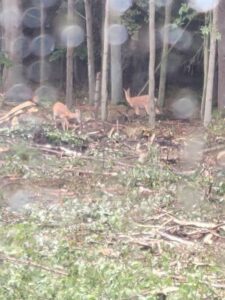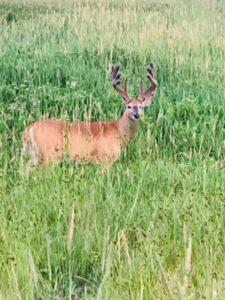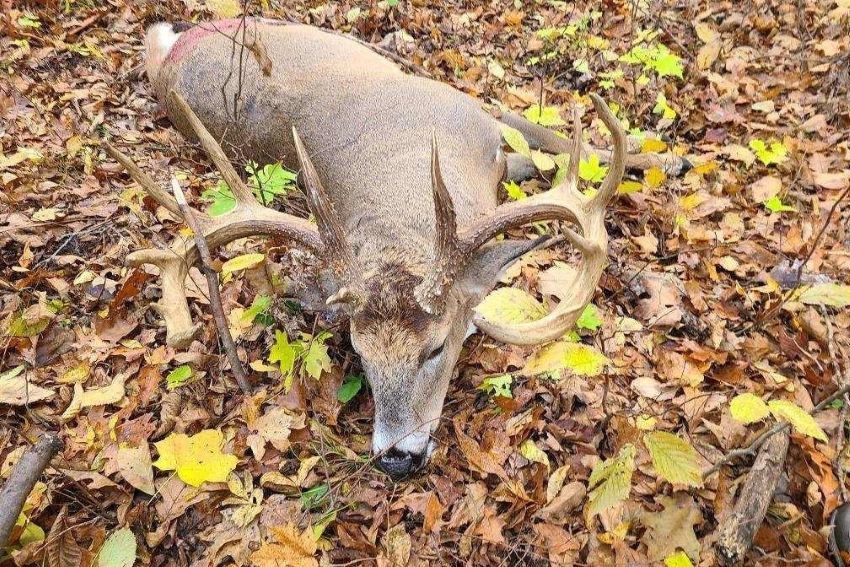Looking to improve your hunting property? Creating food plots in your forested land is a great way to attract more wildlife, especially deer. Whether you’re an experienced hunter or just getting started, food plots can make a big difference. Not only do they draw animals to your land, but they also help improve the overall habitat. But before you jump into planting, there are a few key steps to take to ensure your food plots are a success.
Let’s walk through the process of preparing your forest for food plots, from thinning trees to selective timber harvesting, and setting your land up for hunting success.
Why Build Food Plots?
Food plots are small, cleared areas planted with crops that serve as a food source for wildlife. In Michigan, food plots can:
- Attract game: A reliable food source keeps deer and other animals coming back.
- Improve habitat: Open spaces allow for feeding and resting, making your land more appealing to wildlife.
- Increase your hunting chances: More wildlife sticking around your property means better hunting opportunities.
If you’re in Michigan’s Lower Peninsula, you have great forested land for food plots—but you may need to clear and manage parts of your property’s forest first.
Step 1: Assess Your Land for Food Plots
Before grabbing your planting gear, take a look at your property and figure out where food plots make sense. Here’s what to consider:
- Sunlight: Food plots need sunlight, so look for spots with good exposure, or thin out areas where the trees are too dense.
- Soil: Healthy soil means better crops. Test your soil and add any nutrients it needs to thrive.
- Water: Try to locate food plots near water sources like streams or ponds.
- Access: Make sure the food plots are close to your hunting stands or blinds, but far enough to keep wildlife from getting spooked.

Step 2: Thin Your Woods for Healthier Growth
Thinning dense woods is a crucial step in creating food plots. By removing some trees, you allow more sunlight to reach the forest floor, which encourages underbrush and new plant growth—great for wildlife and your food plot. Thinning also helps the trees you leave behind grow stronger by reducing competition for water and nutrients.
If your property has a lot of red pine or dense timber, it might be time for professional help. Northern MI Forestry can handle the thinning for you, making the process efficient and sustainable.
Step 3: Selective Timber Harvesting for Food Plots
In some cases, thinning isn’t enough, and you’ll need to do some selective timber harvesting. This involves removing specific trees to clear larger spaces for food plots, while also earning some extra cash from the sale of valuable timber.
Selective harvesting benefits your land by:
- Creating open areas for food plots
- Encouraging healthier forest growth
- Providing extra income from timber sales
At Northern MI Forestry, we handle all kinds of timber, including red pine, oak, and softwoods like cedar and spruce. We can help you assess your property and harvest trees in a way that fits your goals.
Step 4: Clear the Land for Your Food Plot
Once you’ve thinned or harvested the necessary trees, it’s time to clear the land for planting. This step involves removing stumps, roots, and any debris left behind. While it can be hard work, clearing land properly is key to giving your crops room to grow.
Pro tip: Leave some limb debris behind! It provides cover for smaller animals and encourages new plant growth—keeping your woods natural and inviting for wildlife.
Step 5: Planting and Maintaining Your Food Plot
Now comes the fun part—planting! The right crops depend on your goals and the time of year, but in Michigan, you’ll often see these options:
- Clover: Easy to grow and a favorite food source for deer.
- Brassicas: Turnips and radishes are perfect for late-season hunting.
- Winter wheat and oats: Great for attracting deer in fall and winter.
Once planted, maintain your food plots by monitoring the soil, fertilizing as needed, and replanting when necessary.

Step 6: Manage Your Forest for Better Wildlife Habitat
Food plots are just part of the bigger picture. Proper forest management, like in-woods processing (where limbs and tree tops are left behind after harvesting), encourages a diverse habitat that supports wildlife. Keeping a mix of open spaces, undergrowth, and mature trees will create the ideal environment for deer and other game in Michigan.
The forestry experts at Northern MI Forestry can help you with everything from food plot prep to sustainable forest management, to make sure your land stays healthy and productive for years to come.
Invest in Your Land for Better Hunting
Preparing your forested property for food plots is an investment that pays off, giving you better hunting experiences and improving the overall health of your land. With the right planning and forest management—like thinning, selective harvesting, and proper land clearing—you can create a space that attracts wildlife and supports sustainable hunting practices.
Ready to transform your hunting land? Contact Northern MI Forestry today to see how we can help you create food plots and manage your forest for optimal hunting results.



